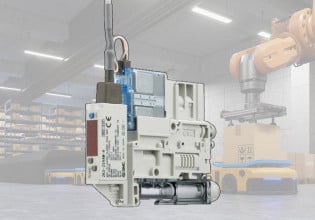How to Identify and Troubleshoot Power and Ground Side Circuits
This article introduces a few simple methods to test which type of circuits — whether ground- or power-switched — are being used and how to troubleshoot and properly fix issues.
Ground side switching is a method that skews more failures in favor of a short circuit which causes the load device to turn on permanently until the problem is fixed. In a normal power side circuit, a failure is more likely to trip a breaker. There are a few simple methods we can use in order to test which of these types of circuits are being used and how to trace problems.
Power Side and Ground Side Wiring Methods
Identifying the wiring used inside a control system is critical before trying to troubleshoot and repair failures. Sometimes, the schematics and other documentation are clear enough and no guessing is required, but this would be too much to hope for every situation.
Both power and ground side controls will turn on the load device exactly the same way. Therefore from simple observation of a working system, there is absolutely no way to tell what kind of switching is used. Understanding the construction of a ground side circuit can often help to identify if this is the kind of circuit used in a control system.
Most industrial equipment is constructed using power side switching methods. This means that the load device will have a direct connection to ground and at least one of the control devices will have a direct connection to power. Beware the use of the word ‘ground’ in this situation! The term always refers to the current-carrying return path back to the power supply. This should never be earth ground. In DC circuits, this will be the -Vdc of the power supply, and in AC circuits, it’s the neutral path. Ground is an easy subject to confuse terms.
Measuring Voltage on Ground-Side Load Devices
No matter where in a circuit it lies, the first open control device (switch or button) will always drop the entire source voltage. Measuring the voltage across devices will not be very helpful. Instead, make all voltage measurements relative to the -V of the DC supply, or in AC they can be made relative to the neutral source.
If a device is ground side switched, then at least one side of the load will always have full voltage, since it’s connected directly to power.
The simplest test is to de-energize the load and test both sides with respect to 0 VDC. If you measure source voltage on both load terminals, this is a ground switched circuit. Both sides should measure the same source voltage, since the load is immediately connected to the +V side of the supply, and no voltage is being dropped by the de-energized load.

Figure 1. With the load de-energized, a ground switched circuit will show both terminals measuring 24 volts (or the applicable control voltage).
When energized, only one side of the load will have voltage. This is the terminal that directly connects to the +voltage source. The other terminal, which has 0 volts, connects to the switching control devices.
Testing the control devices leads to somewhat less obvious results, but it would appear to be the opposite observations as the load. If there is only one control, it is quite simple. When the load is de-energized, one of the switches (perhaps the only one) will have full source voltage on one wire, no voltage on the other.
With the load energized, every wire connected to the switch(es) will measure zero volts since now the load device, immediately following the source, drops the entire voltage by itself.
Measuring Voltage on Power-Side Load Devices
Similar but opposite measurements will indicate a power-side switched circuit. When the load is de-energized, all voltage is lost on the control devices before reaching the load. Therefore, both terminals of the load should measure 0.0 volts, as shown in Figure 2 below.

Figure 2. With the load de-energized, a power switched circuit will show both terminals measuring 0.0 volts.
It is futile to try and identify the circuit type by measuring an energized load. In both cases, the control devices will no longer be dropping any voltage, so the voltage will be 24 V on one side of the load, and 0 V on the other.
Identifying a Short-circuit Fault Location
With power removed from the circuit in case of a known fault, most problems can be solved with a resistance meter. The good news is that both kinds of circuits — both power and ground switched — follow roughly the same troubleshooting steps.
The most likely short circuit location is a wire near the control devices since there are more devices and therefore more wires. Additionally, control wires are usually located in conduits with longer runs and more pinch points in order to reach accessible operator stations. This obviously is not always the case (for example in a severely vibrating load device — those wires might come loose more easily), but it does appear more often.
Remove power and ensure that the load device is supposed to be de-energized. Make sure that the switches are in the correct state to simulate the short-circuit fault condition if the power were turned on.
For Ground Switched Circuits
Use the resistance meter and check from the negative side of the load device to -Vdc (or neutral). If the short-circuit fault is present, the meter should read 0 ohms, and can then be traced down to the exact fault location.
For Power Switched Circuits
Use the resistance meter to check from the +Vdc to the -Vdc. (Again, remove power first or damage to the meter can occur). If the fault is present, the meter should read 0 ohms, a short circuit. The exact location can be traced from there.
Of course, not every fault is a short-circuit. Open circuits are also extremely common, but an open fault will not blow a fuse/breaker. This will be the location in the circuit that drops the entire source voltage. Ground or power switching makes no difference.
Quick Rule of Thumb for Identifying Circuits
If you truly cannot or have no way of positively identifying the circuit type, then make two assumptions to keep yourself and the equipment safe.
- If you are working on a control device (button, switch, etc.) then assume the circuit is power side switching. This would cause all the controls to potentially have the entire source voltage present. Treat them with caution.
- If you are working on a control device, assume ground side switching, which would place the entire source voltage onto that load.
In either case above, the safest practice is to remove power before performing any serious modifications. But in the case of testing voltage, approach the situation according to the given rule of thumb, and you will be much more likely to work with a proper attitude of safety for yourself and the equipment.






